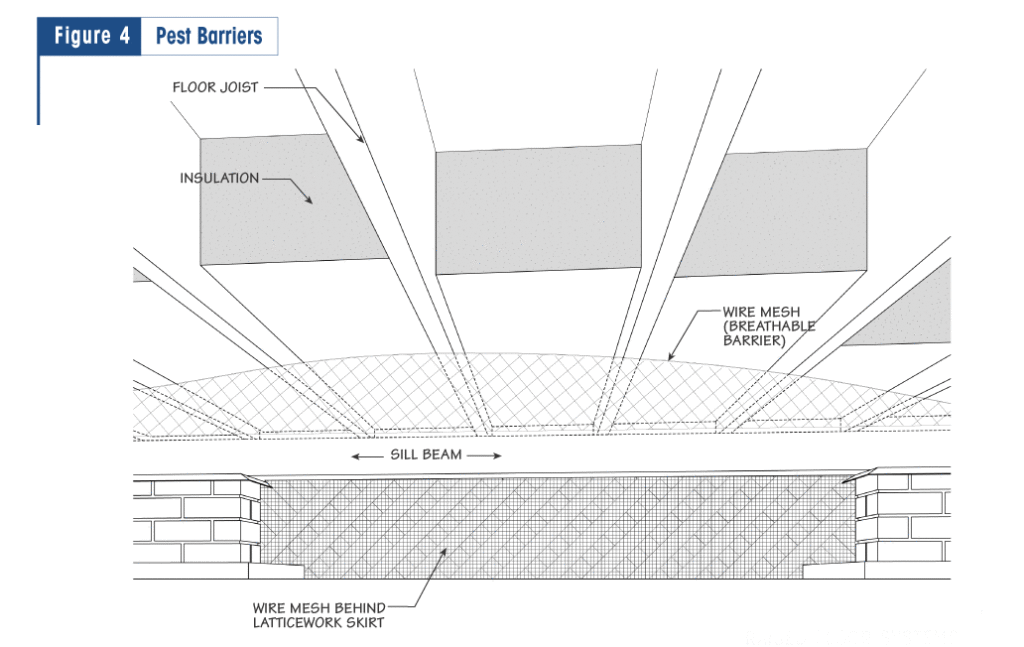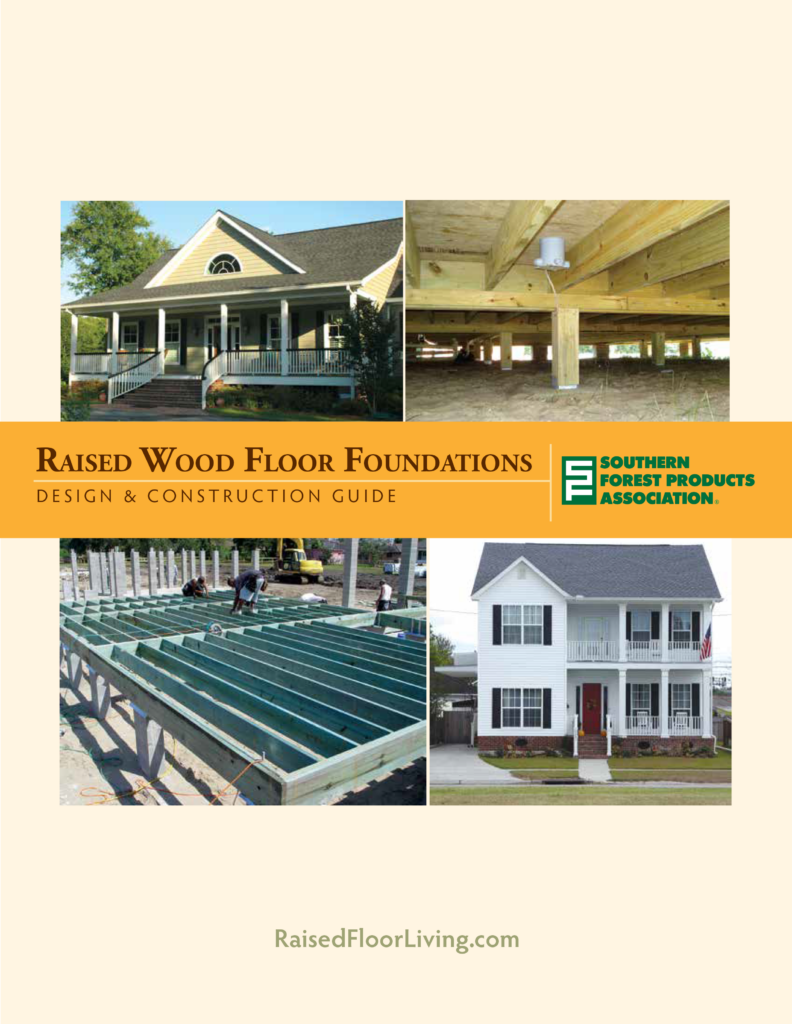Moisture and Pest Management
Raised Wood Floor
Foundation Moisture and Pest Management
Moisture Management
A raised wood floor foundation separates a structure from one of the biggest sources of moisture — the ground itself. With proper design, construction, and maintenance practices, a raised floor system can remain dry and allow for effective moisture and pest management.
When constructing a raised wood floor, it is important to focus on moisture and pest management by paying attention to:
- Drainage paths: Make sure water and moisture are moved under and away from the home. Flood vents are required within enclosed crawlspaces built in flood zones to provide pressure equilibrium to the foundation walls in the event of flooding.
- Ventilation: Whether natural or mechanical, proper ventilation is vital to the occupants’ health and the structure’s sustainability. Installing a Class I vapor retarder over exposed earth under a raised wood floor will reduce code-required ventilation, though incorporating plentiful, rather than minimal, ventilation creates optimum foundation performance.
- Vapor retarders: Conditioned/semi-conditioned crawlspace construction requires the vapor retarder runs continuously up the inside face of enclosing foundation walls, sealed to the walls within inches of the sill plate.
Insulation
The right insulation can significantly impact moisture management and is critical to the health, energy performance, sustainability, and overall livability of a raised wood floor home. Particular attention is recommended in coastal and other moisture-rich environments, especially hot, humid climate zones.
When deciding on insulation, consider the minimum R-value required, construction cost, home occupant energy use and related costs, off-gassing of volatile organic compounds, and the insulation’s compatibility with other construction methods and materials used, as well as with both the site-specific and the surrounding environment.
Common thermal barrier-type insulations include options such as fiberglass or cellulose batt, open-cell sprayed cellulose, and closed-cell sprayed foam.
Thermal break insulation, including rigid foam board, is typically installed at the exterior face of the thermal envelope. This type of insulation provides continuous protection, excluding thermal bridging materials, and is often placed behind exterior finish materials or between footings/foundation walls and bearing soils in frost-protected or thermally enhanced foundations.
Radiant barrier-type products, such as foil-faced structural panels, have been proven to enhance home energy performance when sufficient, continuous “air space” is immediately adjacent to the foil surface, but are redundant if insulation eliminates the required void.
Don’t overlook the vapor barrier. Wood and wood fiber-based products must be allowed to “breathe;” otherwise, their service life can be reduced. The improper use of vapor retarders, including insulation products such as closed-cell spray foam which forms a vapor barrier, may damage structural elements where wood products are unintentionally encapsulated.
Pest Management
By design, a raised wood floor foundation helps isolate the living space from pests by elevating it above the ground. Practical and effective methods and materials are available to also prevent entry of pests into the crawlspace.
In continuous stemwall foundations, pest entry is restricted with properly specified ventilation coverings. Various materials can be used, as long as the covering openings do not exceed one-quarter inch.
With a pier-and-beam foundation, use either a perimeter or an under-floor barrier to inhibit pest entry. Pressure-treated decorative latticework backed with corrosion and pest-resistant screening can be framed between piers at the foundation’s perimeter.
For protection under the floor, a breathable pest barrier is typically attached to the bottom edge of the joists to prevent pests from nesting in insulation and damaging wiring or other systems. Common materials used include:
- House wrap
- Hardware cloth
- Fiberglass insect screens
- Plastic webbing or netting
- Corrosion-resistant wire mesh
- Perforated vinyl or fiber-cement soffit panels
Check out our Raised Wood Floor Foundations publication, a comprehensive design and construction guide for using Southern Pine for raised wood floor systems.

